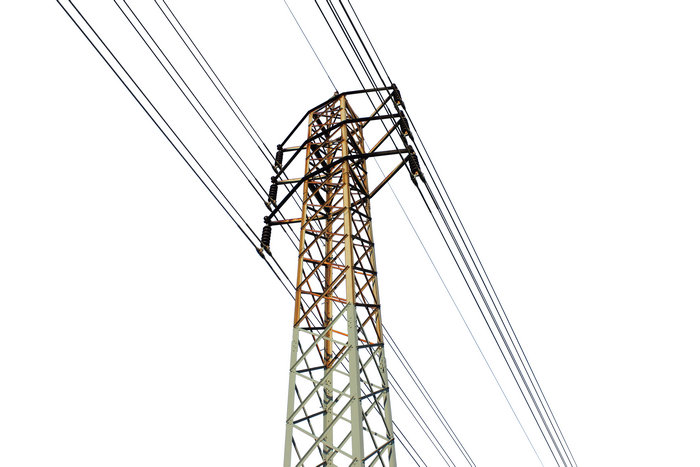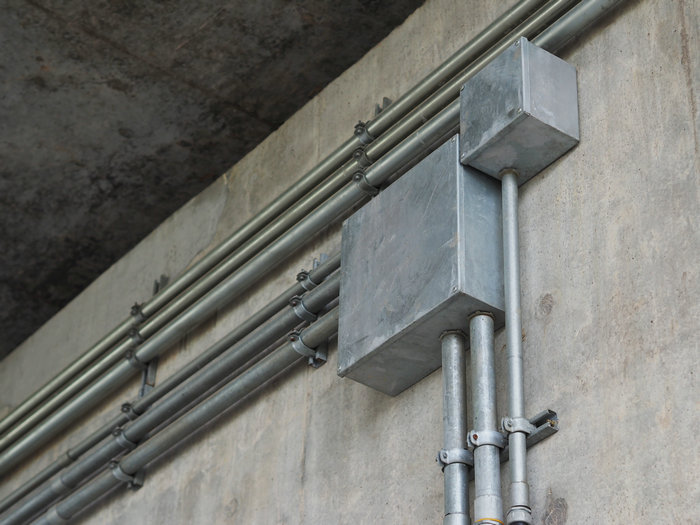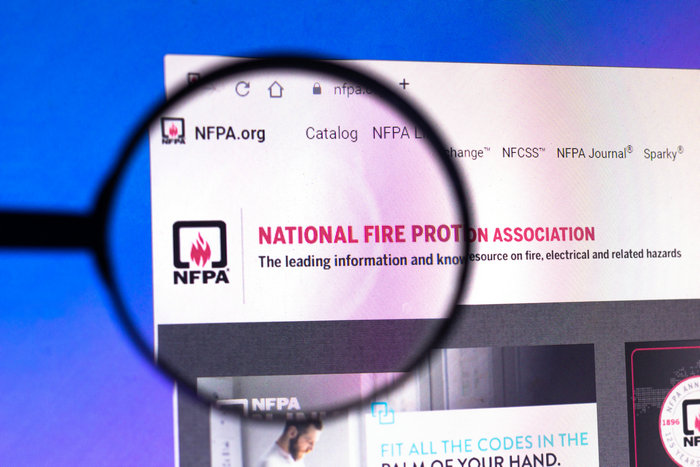
Understanding Plenum and Non-Plenum
What is Plenum
A plenum space is an area within a building that facilitates circulating air for heating, cooling, and ventilation systems. These spaces can be found above the ceiling, below the floor, or in the ductwork. Due to their high oxygen content and lack of fire barriers, plenum spaces pose unique challenges in the event of a fire.
What is Plenum Cable?
Plenum cables are specifically designed for installation in plenum spaces. They have a special fire-resistant jacket made from materials that produce limited smoke and toxic fumes when exposed to heat or flame. This helps reduce the risk of fire spreading through the plenum area and minimizes the hazards associated with smoke inhalation.
Types of Cables: Plenum vs Non Plenum Cable

In this section, we will discuss different types of cables. We will cover plenum cables, non-plenum cables, and riser-rated cables, which are commonly used for various applications such as HDMI, ethernet, and coaxial systems.
About Plenum Cables
Plenum cables are specifically designed for use in plenum spaces, which are air circulation areas in a building, such as those found in air conditioning and heating systems. These cables have a higher flame rating thanks to their special coating, which prevents the spread of flames and reduces the amount of smoke produced in case of a fire. Plenum-rated cables are generally more expensive than non-plenum cables, but they provide an added layer of safety. Some examples of plenum cables include CAT5, CAT6, and copper cables.
About Non-Plenum Cables
Non-plenum cables do not have the strict fire resistance ratings of plenum cables, making them a less expensive alternative. These cables are often used for general-purpose applications, and they come in various types such as PVC cable, CM (Communications Multipurpose)cable, and CMP (Communications Multipurpose Plenum)cable. Even though non-plenum cables are less expensive than their plenum counterparts, they still have flame-retardant properties to reduce the risk of electrical fires.
To ensure the safety of your building and compliance with building codes, always use plenum-rated cables when installing in plenum spaces, such as between floors, walls, ceilings, and under floors that return air. Using non-plenum cables in these areas can result in serious damage and costly code violations.
By understanding the difference between plenum and non-plenum cables, you can make informed decisions for your projects and help ensure the safety of your building and its occupants.
Differences Between Plenum and Non-Plenum Cables
| Feature | Plenum Rated (CMP) Cable | Rise Rated (CMR) Cables | Standard (CM) Cable |
| Fire Resistance | High | Less fire resistant | Least fire resistant |
| Intended Usage | Plenum airspaces, but can be installed anywhere | Mostly used for risers and vertical applications, but can also be used in non-riser spaces | For general use, or areas without fire code restrictions on cable types |
| Outer Jacket | Low-smoke PVC or FEP | PVC Jacket | PVC Jacket |
| Release of Toxic Fumes | Releases a lower level of toxic fumes when burned | Releases a higher level of toxic fumes when burned | Releases the highest level of toxic fumes when burned |
| Cost | Most expensive | Less expensive than CMP | Cheapest |
Introduction to Riser Cables
Riser cables are another type of cable that has its own unique characteristics. Riser-rated cables, also known as CMR (Communications Multipurpose Riser) cables, are specially designed to run through vertical shafts and risers in multi-story buildings. These cables allow for the safe and efficient transmission of data, audio, and video signals between floors.
Riser cables, like their plenum and non-plenum counterparts, can be used for various applications, including HDMI, ethernet, copper, and coaxial cable systems. While riser-rated cables are not as strict in their flame ratings as plenum cables, they still offer a degree of fire protection, making them suitable for use in multi-story installations.
Understanding Cable Coating Materials

Role of PVC in Cable Coatings
When considering cable coatings, the material plays a crucial role in the overall performance and safety of the cable. One common material used in cable jackets is polyvinyl chloride (PVC). PVC is a popular choice due to its flexibility, durability, and affordability. It is often used in non-plenum cables, providing sufficient insulation for many applications.
However, an important downside to PVC is that it can release toxic smoke and harmful chemicals when they burn. This is where low-smoke PVC comes into play. Low-smoke polyvinyl chloride (LS-PVC) features a modified formulation designed to emit significantly less smoke during a fire. This makes it a safer option for locations with strict safety regulations.
Fluorinated Ethylene Polymer in Cable Coatings
When it comes to plenum-rated cables, you’ll likely encounter another material: fluorinated ethylene polymer (FEP). FEP is chosen for its unique properties, such as resistance to high temperatures, excellent electrical performance, and low smoke generation in case of a fire.
Using FEP in cable coatings significantly helps reduce the risk of fire spreading, as well as minimizing smoke emissions. This is especially important for plenum spaces, where air circulation could potentially spread fire or toxic smoke through the building.
Understanding Cable Ratings

In this section, we’ll take a closer look at the NEC and NFPA standards, the importance of UL ratings, and the different cable ratings, such as CM, CMR, CL3P, and CL2P.
NEC and NFPA Standards
The National Electrical Code (NEC) and the National Fire Protection Association (NFPA) are organizations responsible for creating and enforcing safety standards for wiring and cables in the US. These standards ensure safe electrical installations and reduce the risk of fires spreading through buildings. When you’re selecting the right cable for your project, it is crucial to follow the established NEC and NFPA guidelines to prioritize safety and efficiency.
Significance of UL Rating
Underwriters Laboratories (UL) is an organization that tests and certifies products for safety and performance. When you see a cable with a UL rating, it means that it has been tested and meets the specified safety requirements. Choosing cables with UL ratings is a good practice, as it ensures that the cables you’re using have been thoroughly evaluated and are compliant with industry standards.
CM, CMR, CL3P, CL2P Cable Ratings
Cables are designated with specific ratings that indicate their intended use and performance in various environments. Here’s a brief overview of some common ratings:
- CM: Stands for “communication,” and is a general-purpose cable suitable for non-plenum spaces.
- CMR: Riser-rated cables meant for running vertically through non-plenum spaces, such as between floors without air circulation.
- CL3P: Plenum-rated cables are used for installations in air circulation spaces, with stricter fire safety and smoke emission standards compared to CL3-rated non-plenum cables.
- CL2P: Similar to CL3P, these cables are plenum-rated with stricter standards than CL2-rated non-plenum cables.
Air Circulation and HVAC Systems
Role of HVAC Systems
HVAC systems play a crucial role in maintaining indoor air quality and comfort levels in residential, commercial buildings, and industrial spaces. They work to regulate temperature, humidity, and air circulation within a building. As part of this process, HVAC systems often utilize plenum spaces and ductwork to distribute and return air.
Airflow in Plenum Spaces
Plenum spaces are open airspaces typically found above drop-down ceilings or below raised floors. In most cases, these spaces facilitate the airflow circulation within a building, helping to distribute heated or cooled air evenly throughout the area. You’ll often find air ducts in these spaces, connecting the HVAC unit to supply vents, which then circulate the conditioned air in different rooms and areas.
Ducting and Ventilation
Ductwork and ventilation play essential roles in proper air circulation and distribution in an HVAC system. Supply and return air ducts connect the HVAC system to different parts of the building, ensuring that conditioned air reaches every space. Supply air plenums, in particular, help distribute cold air equally across the diffuser, providing even temperatures within the building.
On the other hand, return air plenums help pull air back to the system to be reconditioned, ensuring a continuous flow of air. This constant circulation of air ensures that your living or working spaces remain comfortable and maintain optimal indoor air quality.
When designing and maintaining an HVAC system, careful consideration should be given to the type of materials used. For plenum spaces, choosing between plenum-rated and non-plenum (or general-purpose) cables is crucial. Plenum-rated cables are specifically designed with fire-resistant and low-smoke properties, making them suitable for use in plenum spaces where air is continuously circulating. Non-plenum cables, while typically more affordable, may not provide the same level of fire safety and could potentially contribute to the spread of smoke and flames in the event of a fire.
Frequently Asked Questions
When is it necessary to use plenum rated cables?
It is necessary to use plenum-rated cables when you are running cables through plenum spaces, which are found in buildings between structural floors and ceilings, where air circulates for heating, ventilation, and air conditioning (HVAC) systems. Plenum-rated cables meet specific safety standards to prevent fires and toxic fumes from spreading throughout the building.
How can I identify a plenum rated cable?
You can identify a plenum-rated cable by checking its outer jacket or cover material. Plenum-rated cables, also known as Communications Multipurpose Plenum (CMP) cables, have a low-smoke polyvinyl chloride (PVC) or fluorinated ethylene polymer (FEP) fire-retardant jacket. This jacket has a higher flame rating and makes the cables more resistant to fire damage.
What is considered a non-plenum environment?
A non-plenum environment is an area in a building where air circulation for the HVAC system is not present. Non-plenum environments typically include spaces where cables run through walls, inside conduits, or within rooms without the need for specific fire safety standards. In these areas, you can use non-plenum cables, which are generally less expensive and have a lower flame rating than plenum-rated cables.
Are there any specific regulations for plenum rated cables?
Yes, there are specific regulations and building codes that mandate the use of plenum-rated cables in a plenum space. These regulations vary depending on your location and local building codes, so it is essential to consult with your local authority or a professional to ensure you are adhering to the proper guidelines. Always use plenum-rated cables in plenum spaces to ensure safety and compliance with these regulations.
